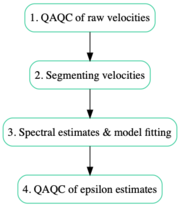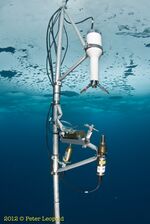Velocity point-measurements: Difference between revisions
mNo edit summary |
|||
| Line 4: | Line 4: | ||
{|class="wikitable" style="margin-left: auto; margin-right: auto; border: none; text-align:center;" | {|class="wikitable" style="margin-left: auto; margin-right: auto; border: none; text-align:center;" | ||
|[[File:Advprocessing.png| | |[[File:Advprocessing.png|180px|link=Flow chart for velocity point-measurements|Flow chart for velocity point-measurements]] | ||
|[[File:Benchmark adv netcdf.png|370px|link=NetCDF velocimeters format|NetCDF velocimeters format]] | |[[File:Benchmark adv netcdf.png|370px|link=NetCDF velocimeters format|NetCDF velocimeters format]] | ||
|[[File:TIC Leopold 1.jpg|150px|link=benchmark datasets for velocity measurements|benchmark datasets]] | |[[File:TIC Leopold 1.jpg|150px|link=benchmark datasets for velocity measurements|benchmark datasets]] | ||
Latest revision as of 12:52, 5 July 2022
Welcome to the velocity point-measurements subgroup!
This subgroup addresses best practices in obtaining turbulent kinetic energy dissipation rate estimates from time series of velocities measured at a point in space. Our recommendations are designed for measurements collected by any manufacturer, provided the data quality is sufficient for resolving the inertial subrange of the velocity spectra.

|

|

|
| Flow chart for data processing | NetCDF dataset format | Benchmark datasets |
We will provide benchmarks for velocity measurements both impacted and unaffected by surface waves. These benchmarks will be a resource for the Ocean Mixing Community to evaluate routines in any programming language. These benchmarks will be limited to instruments fixed in space. We will nonetheless include appropriate references to the existing literature on handling moored instruments.
